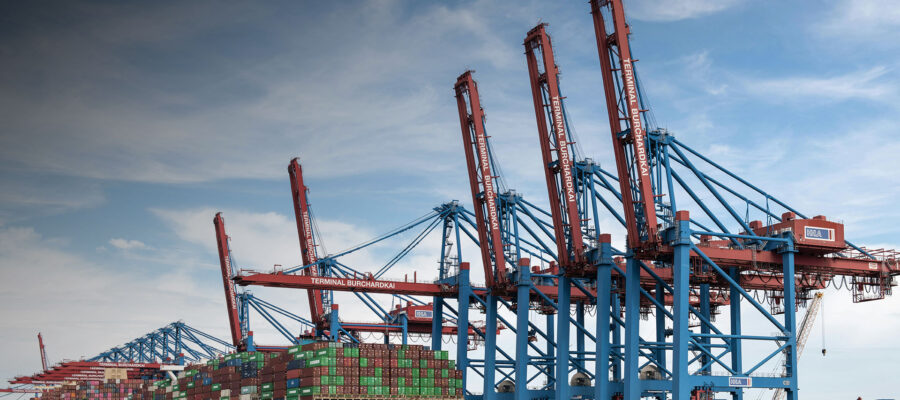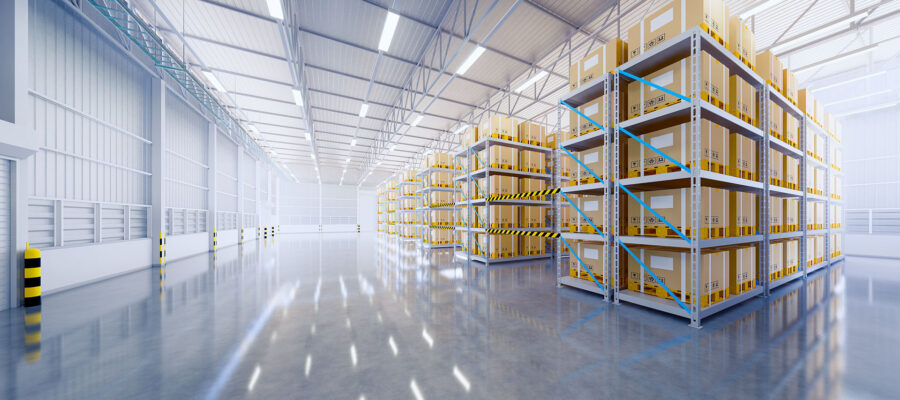This post has already been read 33214 times!
All supply chain operations are complex, but the complications grow when shipments must cross international borders. Recent political turmoil makes cross-border logistics all the more challenging, but new technologies can help. Predictive analytics, in particular, stands out as an optimal solution to these issues.
Predictive analytics is a subset of artificial intelligence (AI) that predicts future circumstances based on past trends and current data. Such insight is essential when grappling with many of the most prominent obstacles in cross-border logistics.
Geopolitical Impacts on Supply Chains
Regulatory barriers and political tension between nations are among the largest challenges in today’s international supply chains. The U.S. recently imposed a 10% tariff on all imports and has suggested higher duties on roughly 90 nations, although many face an uncertain future amid a temporary pause. These fluctuating import restrictions and their broader geopolitical impact make navigating international shipments difficult.
The greatest risk for businesses lies in treating each source of risk as a silo – each as its own separate domain. In the Era of Exponential Risk, organizations must look at risks holistically, taking into account how they interrelate with one another.
Moody’s
Bringing anything into the U.S. will likely be more expensive, and businesses must be prepared for the possibility of future price hikes. Other nations may impose retaliatory duties or restrictions, too, requiring a similar adjustment. Perhaps most challenging is the complexity, interrelatedness, and overall uncertainty around these changes, which undermines confidence in pursuing any one strategy.
How Predictive Analytics Can Help
The key to surviving regulatory shifts is to act quickly. Predictive analytics enables such reactions through several means. First, it can identify potential supply chain risks such as sourcing dependencies in disruption-prone nations that may make logistics more vulnerable to geopolitical changes. Organizations can then adjust their supply chains to enable supplier switches or new logistics routes if required.
While this technology is still relatively new, it has already produced impressive results in this use case. One automaker increased its on-time delivery percentage from 92% to 97% by using predictive analytics to identify supply chain disruptions early. A pharmaceutical manufacturer applied AI to regulatory analysis to achieve a 97% compliance rate and reduce regulatory breaches by 600%.
Bottlenecks and Delays
Even when the geopolitical landscape remains calm, cross-border shipping is still time-consuming and prone to bottlenecks. Clearance delays are the primary concern for 43% of e-commerce businesses, and another 41% cite challenges with customs compliance, which often leads to further stoppages. Something as simple as port congestion from other logistics companies can pose issues, too.
How to Use Predictive Analytics to Streamline Cross-Border Logistics Share on XA lack of visibility likewise contributes to lengthy lead times. Communication with suppliers in other nations typically leaves much to be desired, in turn, resulting in unexpected delays and disruptions. And, the sheer distance between stops in the supply chain adds to the issue, as a longer route means more chances for things to go wrong in transit.
How Predictive Analytics Can Help
As with political and regulatory challenges, many bottlenecks at border crossings are unavoidable to an extent. However, leaders can recognize when the slow process of clearing shipments is most likely to affect critical operations and adapt accordingly when they have enough insight. Similarly, predictive analytics can help reduce errors and mitigate supply-side disruption by giving early warnings..
Machine learning models can analyze real-time data and predict if a shipment will fail to meet deadlines between five and ten days in advance. This forewarning gives logistics providers time to adjust, alert trading partners, and close that gap. Organizations can also use predictive analytics to determine the best shipping times to avoid peak port congestion, . Modeling the likelihood of documentation errors and supplier risks helps identify potential sources of trouble and further helps to minimize delays.
Increased Costs from Tariffs
Supply chain expenses are another prominent issue in cross-border logistics. Tariffs raise the cost of importing foreign raw materials and finished products, and in addition, noncompliance can result in fines. Delays and bottlenecks carry financial consequences since they represent lost productivity and missed sales opportunities.
“The greatest danger in times of turbulence is not the turbulence; it is to act with yesterday’s logic.”
Peter Drucker
Smaller cost factors can add up over time as well. It costs roughly $2.27 per mile to operate a commercial truck, considering fuel, labor, maintenance, and tolls. Container ships are even more expensive per mile. Because an international journey inherently requires more miles, these expenses quickly accumulate.
How Predictive Analytics Can Help
Predictive analytics drives down international shipping costs in several ways. Most notably, it minimizes time and transportation-related expenses by optimizing vehicle routes according to changing data such as traffic and weather. UPS famously saved 10 million gallons of fuel annually by switching to an AI-enabled routing solution.
Predicting regulatory barriers, highlighting supply chain risks, and suggesting alternate suppliers facing lower tariffs are all possible through predictive analytics. While these warnings may not eliminate costs, they signify the best way forward to minimizing expenses in the long run. Over time and with additional supply chain network data, these predictions will become increasingly reliable, resulting in higher savings.
International Supply Chains Need Predictive Analytics
International shipping is unlikely to become less complicated in the future. Supply chain organizations must improve their ability to manage complexity instead of hoping easement tomorrow will make up for difficulty today.
Proactive risk assessment is the new normal, replacing the old model of reactive and siloed supply chain management that becomes a priority only when disruption strikes.
Moody’s
The key to resilience and efficiency amid these obstacles is to identify trends early and respond accordingly. That’s precisely what predictive analytics offers. Those who learn where and how to implement this technology effectively will be the best-prepared to navigate the challenges of cross-border shipping.
For more on how to reduce the effects of tariffs on supply chains, read: How to Create an Agile Supply Chain Despite New Tariffs.
- How to Use Predictive Analytics to Streamline Cross-Border Logistics - May 19, 2025
- The Role of Robotics in Advanced Packaging Systems - December 4, 2024
- Ensuring Supply Chain Resilience Through Enhanced Visibility - September 24, 2024


